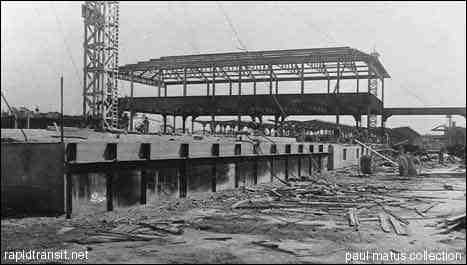
Page 2
Each of these lines built its own Coney
Island terminus. The West End's, known as West End Terminal,
was the westernmost, at the corner of the current Stillwell and
Surf Avenues; then moving east we had the nearly adjacent
NY&SB's Sea Beach Palace terminal and hotel, a little
farther the PP&CI's Culver Depot and, another mile or so
east, the BF&CI's Hotel Brighton.
Being a barrier beach, Coney Island is
miles long but only a few city blocks wide. As each of the
steam lines had its own facilities dead-ending at the beach,
they did not provide for coastwise transportation, and in short
order, a series of short railroads and extensions created a
disconnected but nearly complete rail system the length of the
island ... and beyond!
The PP&CI acquired the New York &
Coney Island, a line that ran from Norton's Point (now Sea
Gate) at the far west end of the island, past the West End and
Sea Beach terminals to connect to its own line near Culver
Depot. Between Culver Depot and the Hotel Brighton was built
the Coney Island Elevated

The Trainman’s Building and overpass, which dominated the station for
more than 80 years, is seen under construction in April 1918.
Railway (Sea View Railway), a long trestle connecting the two; then from the Hotel Brighton to the Manhattan Beach Hotel to the east was a short connector, the Marine Railway; and finally, running east from Manhattan Beach was the eastern Marine Railway. This last put the "beyond" in Coney rails. It swept past the Oriental Hotel to the easternmost buildable tip of sand. If the railroad developers forgot that barrier beaches are
always in a state of flux, and that Coney had rarely been a single island, nature didn't forget, and a February 1880 storm breached its breakwater and carried a good stretch of the eastern Marine out to sea, where its remains may still lie beneath the lapping waters of the entrance to Sheepshead Bay.
The Elevated Era Begins
As the 19th century ended, changes occurred which were to completely recast Coney Island

©2003 The Composing Stack Inc.
©2003 Paul Matus
Updated May 1, 2003